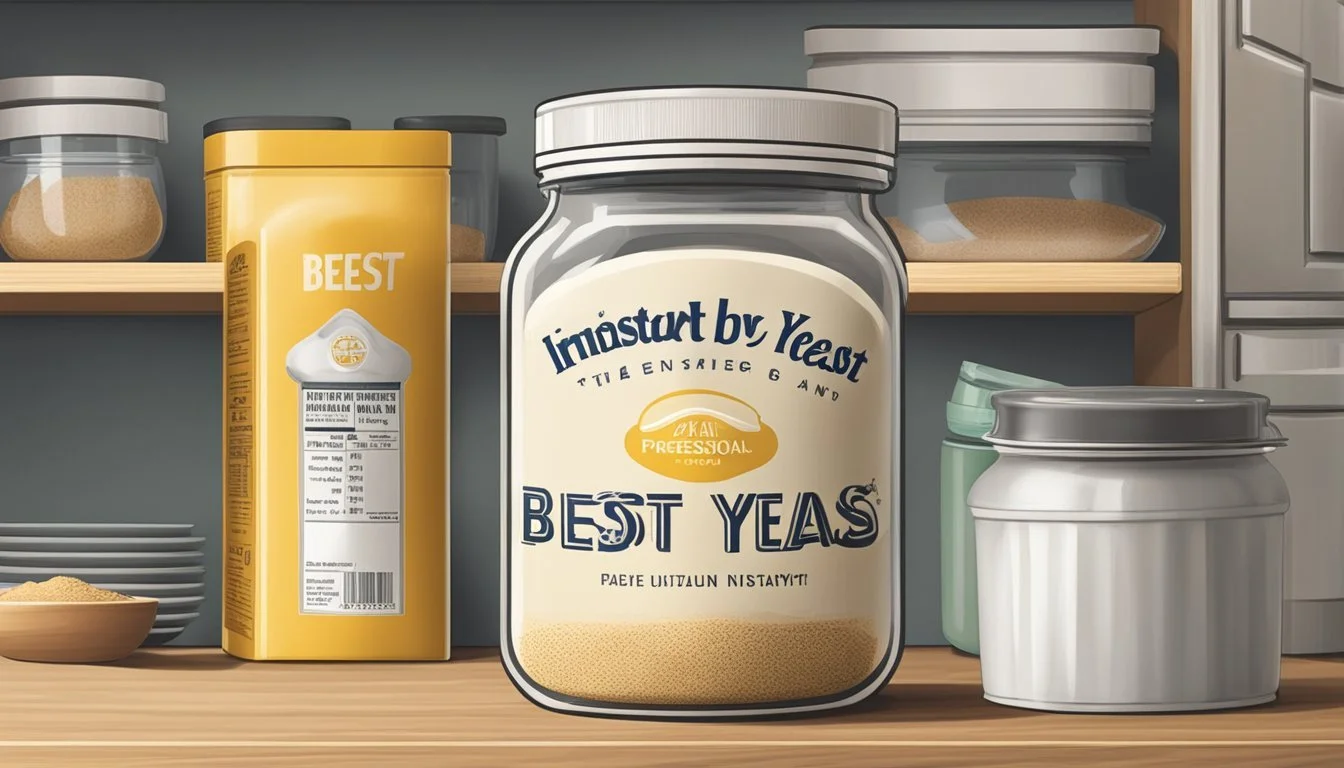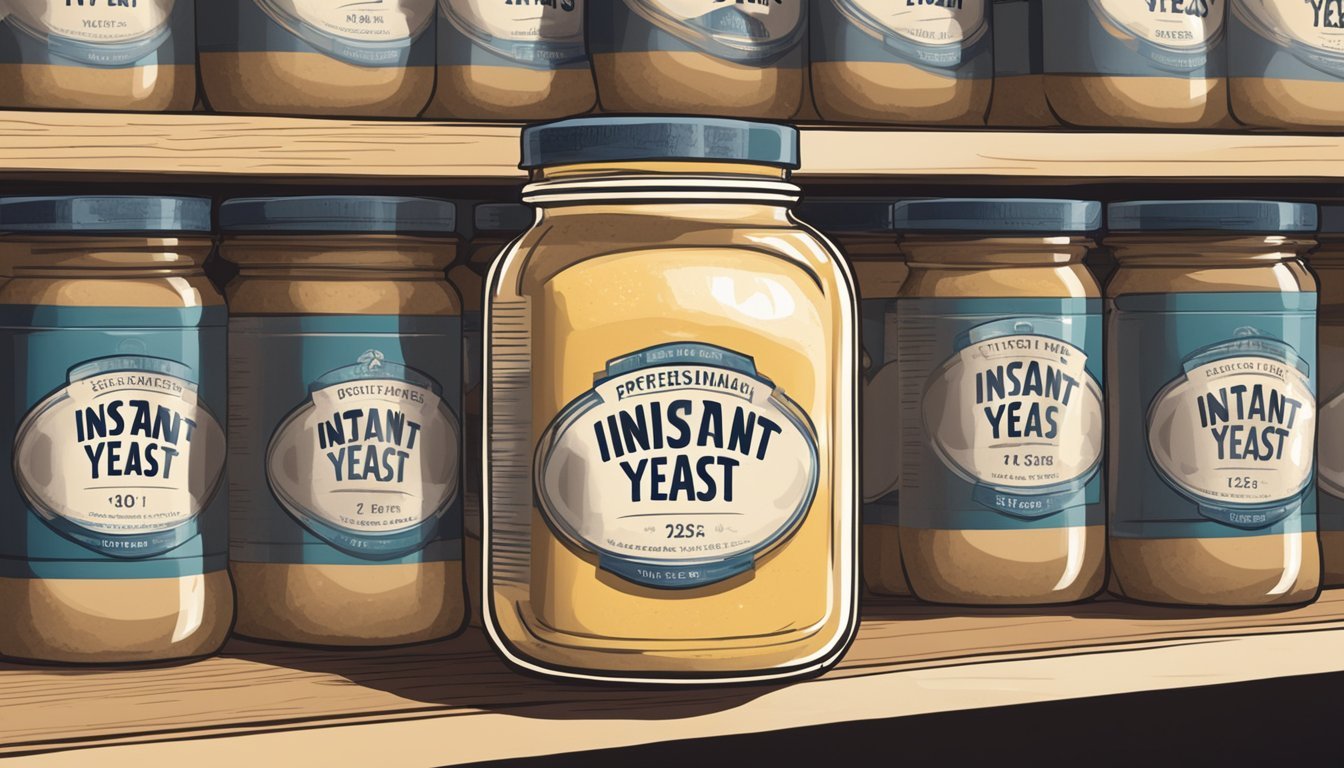How Long Does Instant Yeast Last?
Shelf Life and Storage Tips
Understanding the shelf life of instant yeast is vital for baking endeavors, as it ensures that breads and doughs rise as expected. Instant yeast (how long does instant yeast last?), otherwise known as fast-rising or quick-rise yeast, is a live culture used to leaven bread and is a strain of Saccharomyces cerevisiae. It is favored for its convenience and reliability, as it can be mixed directly with dry ingredients without needing to be rehydrated or proofed first.
When it comes to storage, instant yeast exhibits a long shelf life due to its dehydrated state, which makes it less perishable than fresh yeast. Unopened instant yeast has a shelf life of up to two years. It's important to note that this duration is a general guideline and the exact shelf life can depend on the specific brand and storage conditions. To ensure maximum longevity, it should be kept in a cool, dry place away from heat and moisture.
Once the package is opened, exposure to air, moisture, and temperature changes can decrease the effectiveness of the yeast. For this reason, resealing it tightly and storing it in the refrigerator or freezer is recommended to prolong its potency. Properly stored in a refrigerator, an opened package of instant yeast typically retains its leavening power for three to four months.
Understanding Instant Yeast
To bake with precision and confidence, it's essential to understand the various types of yeast and their distinct properties, particularly when comparing active dry yeast with instant yeast.
Types of Yeast
Yeast is a living organism essential for the fermentation process in baking. There are several types of yeast, but the most commonly used in baking are active dry yeast and instant dry yeast. These types are distinct in how they are processed and how they interact with dough.
Active Dry vs. Instant Yeast
Active dry yeast requires activation in warm water before use, while instant yeast can be mixed directly with dry ingredients. Instant yeast's finer granules and advanced manufacturing process allow it to dissolve quickly and begin its work of fermenting the dough without the need for preliminary proofing.
Characteristics of Instant Yeast
Instant yeast, also known as quick-rise or fast-acting yeast, is more concentrated and contains a higher proportion of live cells than active dry yeast. Its robustness allows it to activate more quickly and effectively, making it a preferred choice for many bakers who seek consistent results and a shortened rise time in their baking process. Instant yeast is versatile and can be stored at room temperature until its expiration date, but for extended shelf life, refrigeration or freezing is recommended.
Shelf Life of Instant Yeast
The effectiveness of instant yeast largely depends on its storage conditions which directly influence its shelf life from the moment it is produced until it is used in baking.
Under Room Temperature
Unopened instant yeast has a shelf life of up to two years from the production date when stored properly at room temperature. The key is to keep it in a cool, dry place away from direct heat and moisture which could compromise its viability. Once opened, the yeast’s responsiveness may decrease, so it is advisable to use it within a shorter timeframe.
Refrigerated Yeast
When stored in the refrigerator, opened instant yeast can remain active for approximately three to four months. Keeping the yeast in an airtight container is crucial to prevent moisture from affecting its quality. Even beyond this period, the yeast could still be viable, but performing a viability test is recommended to ensure success in baking.
Frozen Yeast
For long-term storage, instant yeast can be frozen, significantly extending its shelf life. Frozen yeast can maintain its potency for several months beyond its printed expiration date. To use frozen yeast, one would simply need to thaw it properly, ensuring it reaches an appropriate temperature before use in recipes. It should be noted, however, that repeated freezing and thawing cycles might reduce the effectiveness of yeast.
Proper Storage Techniques
To ensure the longevity of instant yeast, one must prioritize its protection from moisture, air, and extreme temperatures. Utilizing airtight containers and temperature control methods can substantially prolong the yeast's active life.
Airtight Solutions
Instant yeast remains viable longer when stored in an airtight container. This prevents air and moisture from affecting its quality. Glass jars with sealable lids or specialist vacuum-sealed containers are excellent choices for maintaining an optimal environment.
Moisture and Air Protection
Moisture and excess air are detrimental to the shelf life of instant yeast. Ensuring a dry environment is critical, and any container used for storage should be moisture-free before filling it with yeast. Silica gel packets can be added to provide an extra layer of moisture absorption.
Temperature Considerations
Temperature stability is vital for preserving the potency of instant yeast. It should be stored in a cool and consistent environment. The refrigerator is often ideal, maintaining temperatures of 35-38 degrees Fahrenheit (1.5-3.3 degrees Celsius). For long-term storage, freezing instant yeast at 0 degrees Fahrenheit (-18 degrees Celsius) is recommended, as it can significantly extend its shelf life.
Using Instant Yeast in Baking
Instant yeast simplifies the baking process by eliminating the need for hydration before use. It can be added directly to the dry ingredients, thus offering convenience and reliability in dough preparation and fermentation.
Proofing and Activating Yeast
Though instant yeast does not require proofing, a baker might choose to activate it to ensure viability. To activate instant yeast, it should be combined with warm water—ideally between 100°-110°F—and a pinch of sugar (how long does sugar last?). The mixture should foam within 5 to 10 minutes, indicating that the yeast is alive and ready to facilitate dough rise.
Adjusting Recipes for Instant Yeast
When adapting a recipe that calls for active dry yeast to use instant yeast instead, one should reduce the amount of yeast by about 25%. For example, if a recipe requires a 1-ounce packet of active dry yeast, they should use 3/4 ounce of instant yeast. Because of its fine particles, the baker should mix instant yeast thoroughly with the flour and other dry ingredients before adding wet elements.
Rising Time and Fermentation
Instant yeast accelerates bread rise times as it works faster than active dry yeast. This can cut down the fermentation period significantly. A dough that traditionally requires two rises can achieve similar results with a single rise when using instant yeast, leading to a high-quality loaf of homemade bread with less waiting time. However, for some recipes, a longer fermentation may be desired for flavor development; bakers should adjust the rising time based on the specific taste and texture they are aiming for.
Maximizing Yeast Performance
In baking, the performance of instant yeast is crucial for achieving the desired texture and rise in baked goods. Proper storage and ideal conditions are essential to maintain yeast activity and baking outcomes.
Optimal Conditions for Yeast Activity
To ensure peak yeast activity, one must provide an environment conducive to yeast fermentation. Instant yeast typically requires warm water to activate, ideally between 105°F and 110°F. If the water is too cool, yeast activity may be sluggish, resulting in slow fermentation. Conversely, water that is too hot can damage or kill the yeast, leading to poor performance. Including a small amount of sugar can stimulate yeast activity, as yeast feeds on sugar to produce the carbon dioxide that helps dough rise.
Yeast Activity and Baking Outcomes
The activity of properly stored instant yeast directly affects the result of baked products. For the yeast to effectively contribute to dough rise and texture, it should be fresh and active. Proper storage means keeping unopened packets in a cool, dry place, and once opened, sealing tightly and refrigerating to extend its usability for three to four months. Bakers should test the viability of yeast that has been stored for an extended period by proofing it in warm water with a teaspoon of sugar, observing if it foams and rises. If the proper rise is achieved, it confirms that the yeast is still active and will contribute to successful baking outcomes.
Troubleshooting and Tips
Ensuring the longevity and activity of instant yeast is vital for successful baking. Proper storage and testing can save a baker from the disappointment of bread that refuses to rise. Below are precise methods and advice for addressing potential yeast issues.
Identifying Dead Yeast
Visual Examination: If the yeast does not form a foam or bubble after being mixed with warm water and sugar, it may be dead. Simple Test: Mix 2 1/4 teaspoons of yeast with 1/4 cup of warm water (ideally at 110°F) and 1 teaspoon of sugar. Active yeast will produce a foamy layer after 10 minutes.
Preventing Clumping and Spoilage
Storage Conditions:
Refrigerator: Opened instant yeast lasts 3 to 4 months when stored in an airtight container in the refrigerator.
Freezer: For extended storage, instant yeast can be kept in the freezer where it remains potent for several months.
Avoid Moisture: Ensure the container is moisture-free before adding the yeast to prevent clumping and spoilage.
Substituting Yeast Varieties
When a recipe calls for active dry yeast and only instant yeast is available, use 25% less instant yeast than the amount of active dry yeast specified. Conversely, if substituting active dry for instant, increase the quantity by 25%.
Substitution Ratio: For every 1 teaspoon of active dry yeast, use 3/4 teaspoon of instant yeast.
Direct Addition: Instant yeast can be added directly to dry ingredients without proofing in liquid first.
By following these focused practices, one can mitigate baking issues related to yeast and ensure consistent results.
Cost and Comparisons
In assessing instant yeast's value, comparisons with other leavening agents and a price analysis are crucial. This section examines instant yeast's cost-effectiveness and shelf life relative to alternatives.
Instant Yeast vs. Other Leavening Agents
Leavening agents like baking powder and baking soda are essential in baking, providing the chemical reaction needed to make baked goods rise. Instant yeast, often labeled as quick-rise or rapid-rise yeast, differentiates itself by not requiring proofing and offering a shorter rising time. This convenience contrasts with active dry yeast and cake yeast, which generally need to be dissolved in water before use. Instant yeast tends to have a longer shelf life than cake yeast; however, it is less acidic than leavening agents like baking powder or baking soda, which can be activated immediately upon contact with an acid and a liquid.
When comparing storage, instant yeast excels with a shelf life that can extend to a year or more if unopened and stored properly in a cool, dry place. Manufacturers often recommend that once opened, instant yeast should be stored in an airtight container in the refrigerator or freezer to maintain its activity.
Price Analysis of Yeast Products
The price of yeast varies depending on the form it is sold in (e.g., packets, jars, or bulk) and the brand. Typically, instant yeast might appear more expensive than active dry yeast; however, considering its longer shelf life and the smaller quantities needed for the same rising effect, the cost per use can be quite competitive. It's important for consumers to read the labels for weight and recommended usage to accurately compare the cost-per-bake between the different yeast products and manufacturers.
In terms of cost efficiency, bulk purchases can offer better value, but food storage practices must be considered, as improperly stored yeast can lose its potency and result in wasted product and money.







